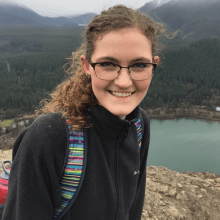Is It Feasible to Create a Statewide Pesticide Monitoring Network?
Pesticide exposure is of great concern to beekeepers, but understanding what pesticide exposure looks like in a landscape is a challenge. Pollen collected from honey bee colonies is one common way of monitoring how pesticide load in the environment and within a honey beehive. However, it is unclear if this style of monitoring method could detect realistic changes in pesticide exposure to bees. Beekeepers and policy makers are interested in designing a way to monitor pesticides in bee hives. Could trapped pollen be used to track changes in pesticide exposure over time? How many sites would we need to include to be effective? In this presentation, we will discuss the results from 70 sites where pollen trapping occurred over two years and the estimated costs of such a monitoring program.
Emily Carlson joined the Oregon State Honey Bee Lab in 2019 to pursue her PhD in Horticulture; her dissertation focuses on understanding pesticide risk models and where pesticide exposure occurs in a landscape. After graduating from Gonzaga University in 2014, Emily worked in the nonprofit and public sectors as a grant writer and community educator before returning to Oregon for graduate school. Emily developed a strong interest in science policy and has worked with the Entomological Society of America to advocate for the needs of fellow entomologists and beekeepers. Outside of work, Emily enjoys spending time with her two cats, playing card games, and reading fantasy books.

